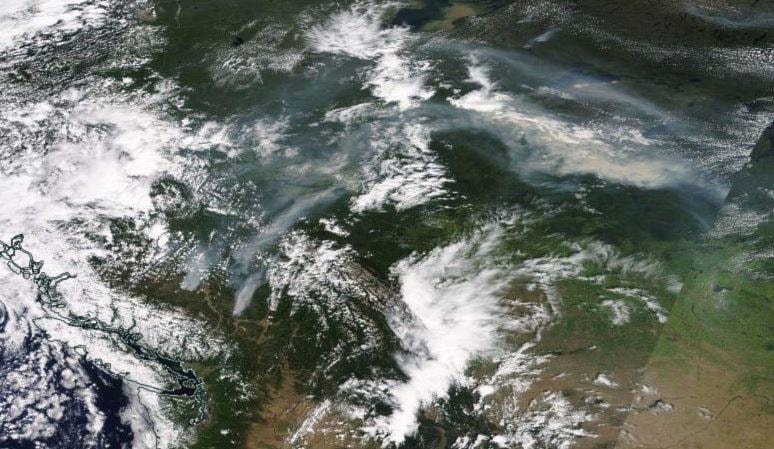Smoke from the still burning B.C. wildfires has turned Central Alberta skies into a hazy grey.
Environment Canada’s air quality health index in Red Deer peaked at four, or moderate risk, on Monday morning, before dropping down to two as the day progressed. Tuesday’s air quality forecast is three, or moderate risk.
Wildfires continue to rage throughout B.C., with about 150 still burning across the province.
On top of the smoky skies, the Canadian Crop Hail Association said it has been a hot and dry summer across the Prairies, with intermittent extreme heat.
According to the association, crops in Central Alberta have declined to 74 per cent rated good to excellent, which is still above the five-year average of 68 per cent.
“Lack of moisture and prolonged heat have started to affect both the quality and yield of crops in the central regions,” a release from the association reads.
According to Environment Canada, Red Deer has not seen significant rain since July 10 when 25 mm of rain fell. Since then, only 189.6 mm of rain has fallen, with the biggest rainfall occurring on July 20 when 4.6 mm of rain fell.
For the month of July, Environment Canada has recorded 53.8 mm of rain has fallen in Red Deer. That is well below the 30-year average of 96.6 mm of rain for the city.
Kneehill County, southeast of Red Deer, and the town of Trochu both are under fire bans because of the wet weather.
Meanwhile, the Verdant Creek wildfire in Banff National Park has again closed Sunshine Village ski resort. It had reopened, but hot, dry and windy weather made the fire more active and has forced it to be reclosed. The fire has not spread across the border to Alberta yet.
Parks Canada said warmer temperatures are forecast through the week and will continue to produce increased fire activity.
“Smoke columns will build in the afternoon and settle into valley bottoms in the evening,” reads the press release. “This pattern is expected to continue while hot and dry conditions persist.”
